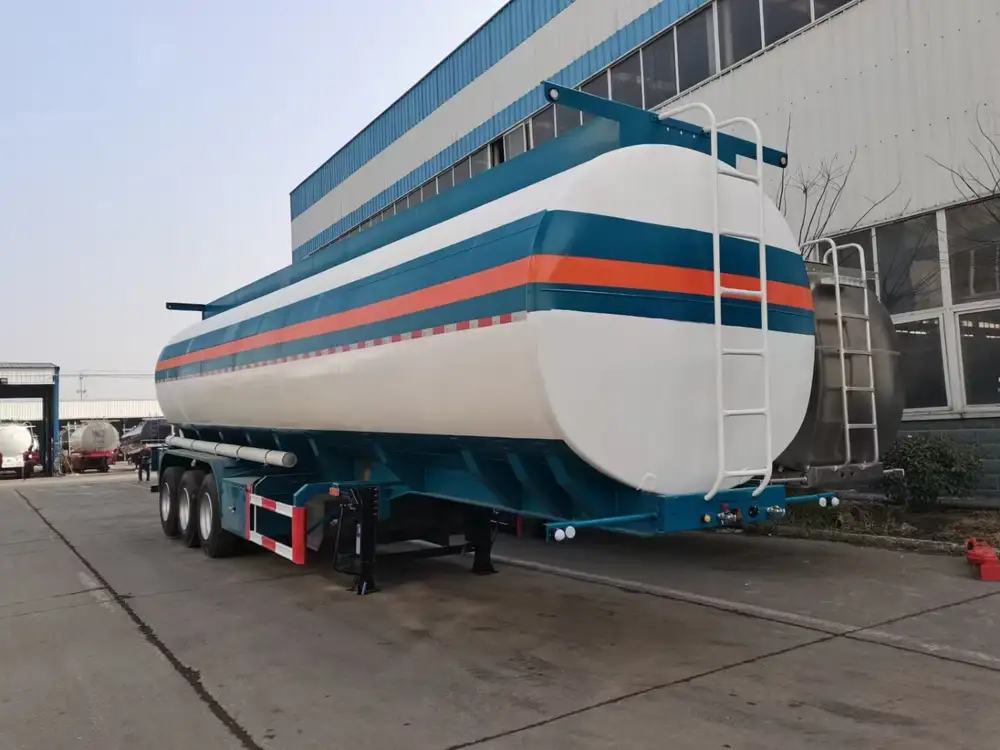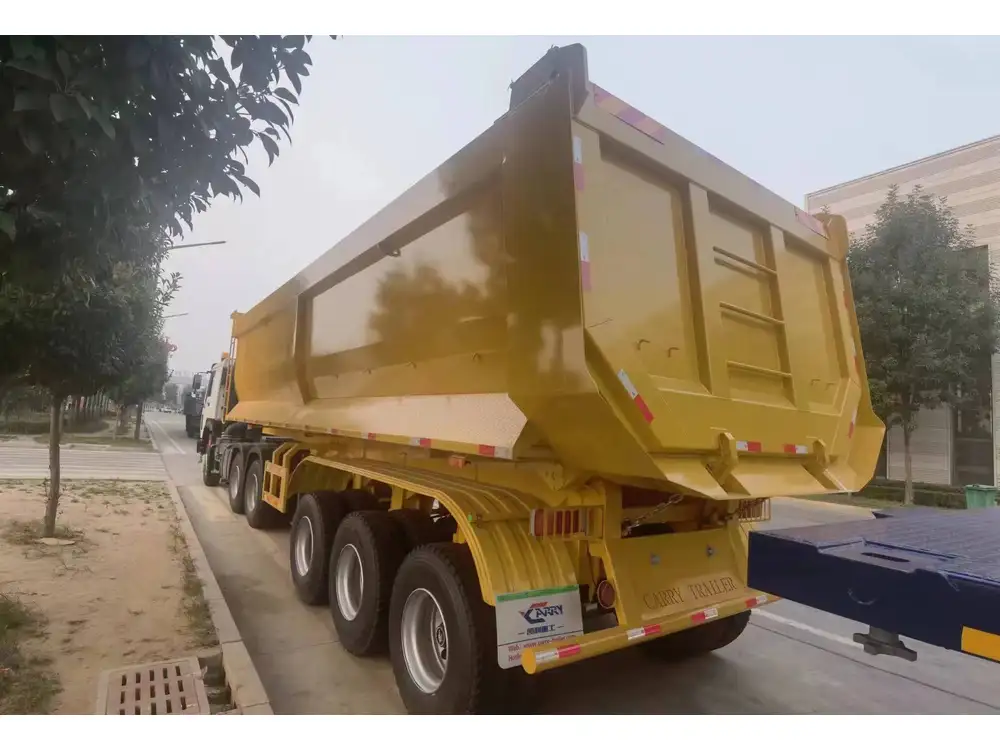The world of transportation is intricate, especially when it comes to oversized vehicles like semi-trucks and their trailers. For manufacturers, logistics companies, and fleet managers, comprehending the weights involved in operating a semi-truck and trailer is paramount. This guide aims to demystify the complexities surrounding the weight of semi-trucks and trailers, addressing various factors that influence these weights.
The Basics: What Constitutes a Semi-Truck and Trailer?
A semi-truck, often referred to as a tractor or an articulated lorry, is a powerful vehicle designed for hauling trailers. The trailer is the cargo-carrying unit attached to the semi-truck. Together, they are critical for transporting goods across vast distances, making the understanding of their weights vital for compliance with regulations, efficiency in fuel consumption, and overall safety on the road.
Components of Weight Calculation
Several components contribute to the overall weight of a semi and trailer combination. These can be categorized into several key areas:
Vehicle Specifications:
- Tractor Weight: The weight of the truck itself, which typically includes the engine, cab, and chassis.
- Trailer Weight: The weight of the trailer, including its frame and any built-in equipment.
Cargo Weight:
- This is the total weight of the load being carried in the trailer, which can vary drastically based on the type of goods being transported (e.g., liquids, solids, vehicles).
Towing Equipment:
- The weight of hitch systems, additional storage, or optional equipment that may be added to enhance operational functionality.

General Weight Ranges
To begin addressing the question of “how much does a semi and trailer weigh,” let’s examine some general weight ranges associated with various semi-truck and trailer combinations:
| Vehicle Type | Average Weight (lbs) | Average Weight (kg) |
|---|---|---|
| Standard Semi-Truck | 10,000 – 20,000 | 4,500 – 9,000 |
| Standard Trailer | 20,000 – 40,000 | 9,000 – 18,000 |
| Fully Loaded Combination | 30,000 – 80,000 | 13,600 – 36,300 |
| Heavy-Duty Semi-Truck | 18,000 – 25,000 | 8,200 – 11,400 |
| Specialized Trailers | 15,000 – 50,000 | 6,800 – 22,700 |
It’s essential to note these figures can vary based on several factors including the manufacturer’s specifications, the materials used in both the truck and trailer, and any modifications or customizations made.
Legal Weight Limits and Regulations
The Federal Motor Carrier Safety Administration (FMCSA) enforces weight limits for vehicles operating on public roads in the United States. Understanding these limits is crucial for ensuring compliance, avoiding fines, and maintaining safety standards.
Weight Distribution Regulations
For safety and performance, weight distribution is often regulated:
- Gross Vehicle Weight Rating (GVWR): This is the maximum permissible weight of a fully loaded vehicle (truck plus trailer).
- Gross Combination Weight Rating (GCWR): This governs the total weight of the truck and trailer combined, including cargo.
- Axle Weight Limits: Each axle must support a specific weight that does not exceed the regulations outlined by local and national authorities. Typically, single axles can carry up to 20,000 lbs, while tandem axles can handle up to 34,000 lbs.

Compliance Advantages
Maintaining legal weight ensures several benefits:
- Enhanced safety by minimizing risks like tipping over or tire blowouts due to excess weight.
- Improved fuel efficiency and cost savings by optimizing load capacities.
- Reduction of potential penalties or legal issues that arise from overloading.
Practical Considerations for Weighing Semi-Trucks and Trailers
To accurately determine the weight of a semi-truck and its trailer, various methods and tools can be utilized:
Weigh Stations
Weigh stations are strategically placed along major highways and interstates and serve as critical points for monitoring compliance with weight regulations. Here, operators have the opportunity to:
- Officially weigh their vehicles to ensure they are within legal limits.
- Identify potential overloading issues to rectify them before hitting the road.

Portable Scales
For fleets on the move, portable scales are invaluable. These tools allow operators to weigh their trucks at various points during a route, ensuring compliance without the need to locate a weigh station.
Onboard Weighing Systems
Advanced technology has provided options for onboard weighing systems integrated into trucks:
- Load Sensors: Installed on axles, these sensors provide real-time weight data.
- Digital Displays: Offering drivers immediate access to weight readings, facilitating better management of cargo weights.
Handling Overweight Situations
If a semi-truck or trailer exceeds the allowable weight limits, it is essential to take immediate corrective actions. Here are the steps to follow:
- Unload Excess Cargo: Quickly identify and remove extra weight from the vehicle.
- Redistribute Weights: If possible, shift cargo to achieve better weight balance across axles.
- Consult Regulations: Review local guidelines to ensure compliance with all legal standards.

Factors Influencing the Weight of Semi-Trucks and Trailers
Understanding that not all semi-trucks and trailers are created equal is paramount. Various factors can significantly change the overall weight of these vehicles:
Trailer Types
The type of trailer being used can influence weight greatly. Here’s a breakdown:
| Trailer Type | Description | Impact on Weight |
|---|---|---|
| Flatbed | Open trailer for various goods | Low to moderate weight |
| Refrigerated | Equipped for perishable items | Higher due to insulation |
| Tanker | For liquids | Higher due to tank structural features |
| Enclosed Box | Full cargo protection | Moderate weight addition |
Materials Used in Construction
The materials employed in manufacturing semi-trucks and trailers can greatly affect weight:
- Steel: Durable but heavy, providing strength.
- Aluminum: Lightweight and resistant to corrosion, often used in trailers to reduce overall weight.
- Composite Materials: Emerging materials that can enhance both strength and reduce weight.

Equipment and Accessories
Any additional accessories or equipment installed can also contribute to the overall weight:
- Toolboxes: Adding stability but at the cost of extra weight.
- Aerodynamic Fairings: Improving fuel efficiency but increasing vehicle drag.
Safety Implications of Weight
The weight of a semi and its trailer has profound implications for safety and operational efficacy. Higher weights contribute to longer stopping distances, difficulty in maneuverability, and increased risk of tire blowouts. Therefore, assessing and managing weight is not just about compliance but also about ensuring the safety of the driver and the general public.
Driver Training and Awareness
Equipping drivers with knowledge about the significance of weight management is critical. This includes:
- Understanding load limits.
- Recognizing weight distribution dynamics.
- Managing vehicle performance based on weight regulations.

Conclusion: Weighing the Future
The conversation around the weight of semi-trucks and trailers is multifaceted, weaving through regulatory, safety, operational, and financial threads. As the transportation industry continues to evolve, embracing smarter technologies for weight measurement and adhering to strict compliance will be crucial strategies for maximizing efficiency and safety.
For manufacturers, logistics firms, and operators alike, understanding every aspect of vehicle weight from initial specifications to operational adjustments can lead to better decision-making and enhanced performance in an increasingly competitive arena. In this dynamic landscape, staying informed and adaptable will ultimately pave the way for success.



